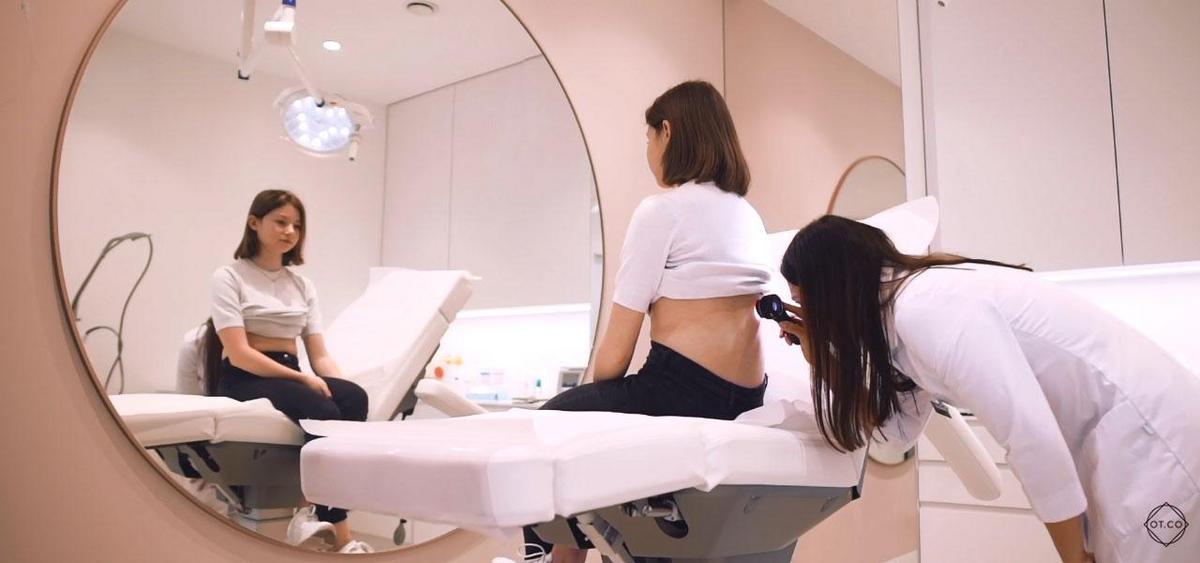TL;DR:
- Most people have pigmented nevi (moles), often benign, but they should be regularly checked by a dermatologist.
- Moles form due to multiplying melanocytes and can be congenital (from birth) or acquired (from UV radiation exposure).
- Risk factors for melanoma include excessive UV exposure, genetics, and environmental/mecahnical damage.
- Laser Removal: Non-invasive, quick, safe, painless, and has fast healing, but can't be done if malignancy is suspected due to no tissue sampling for histopathology.
- Surgical Removal: Allows histopathology, involves anesthesia, sutures, and post-procedure wound care.
- Doctors recommend removing nevi in high-risk areas (e.g., neck, shoulders, armpits, genital area) even if benign. Regular observation of nevi is advised over unnecessary removal.
The problem of nevi on the skin affects practically all of us. The average person has at least one pigmented lesion that requires careful observation. Not all lesions of this type qualify for immediate surgical intervention, in fact, as a rule, they do not require it at all. However, it is worth being vigilant about this issue as well, and having nevi checked regularly by a dermatologist.
How are moles and birthmarks formed?
Pigmented nevi, or popular moles, are made up of gradually multiplying skin pigment cells – melanocytes. They can be regular in shape, clearly demarcated from the rest of the skin surface, or have jagged and irregular edges. Their coloration can be red, brown, black, bluish or close to the natural skin tone. pediatric moles examination Some moles appear on the body as early as birth and are of the congenital group. Others, which are acquired, are usually formed under the influence of excessive skin exposure to ultraviolet radiation.
Are moles and birthmarks dangerous to health?
In most cases, moles are benign lesions and, with a proper lifestyle, are not a health risk. However, it is worth remembering that there are many risk factors that can cause melanoma to develop from an existing nevus. Factors that promote the formation of dangerous skin lesions include:
- UV radiation – responsible for the formation of most cancerous skin lesions. For many years, doctors have been warning and asking people to use the sun sensibly and give up tanning beds. After all, excessive tanning increases the risk of melanoma by as much as 70%, and other cancers by up to 100%.
- Genetic factors – although melanoma is not an inherited disease, increased susceptibility has been shown in people whose close relatives have suffered from this type of cancer.
- Environmental factors – a seemingly ordinary birthmark can develop into a malignant form of cancer under the influence of various chemicals, as well as situations of mechanical damage, abrasions or cuts.
It is up to the dermatologist to decide how much risk a particular mole poses. Some lesions are considered safe, but some require observation. The ideal solution is to remove the skin lesions. Such action is completely safe and painless.
Laser therapy
The procedure is performed under local anesthesia, so patients need not fear pain. For a small lesion, the treatment time does not exceed several minutes. The use of CO2 laser involves the evaporation of water and shrinking of blood vessels in the area where the laser beam was directed. The great advantage of this method is the excellent visual effect and fast healing time (depending on the size of the lesion to be removed, the healing process takes from a few days to a few weeks) – the surrounding tissues are not damaged. Due to the non-contact nature of this method, there is also no risk of transmitting infectious disease viruses.
When performing a laser lesion removal procedure, the doctor should be absolutely sure that the lesion is safe. This is because nevi should not be removed by this method if there is any suspicion of the malignancy of the mole, as the laser makes it impossible to collect tissue for histopathological examination.
Surgical removal of skin lesions
Surgical removal of skin lesions makes it possible to eliminate the skin lesion and send a slice for histopathological examination. During the procedure, the patient is given local anesthesia, making pain virtually imperceptible. You may, however, feel a mild pinching or burning sensation. The doctor removes tissue material from the lesion and healthy skin, reaching down to the subcutaneous tissue. Sutures and a dressing are then placed on the resulting wound. After a few days, the patient must come in for removal of the stitches and evaluation of the wound's healing by the doctor.
Most nevi are removed for cosmetic reasons. When deciding on such a procedure, remember to consult your doctor. **The doctor will decide on the choice of method and the assessment of the malignancy of the lesion. Doctors recommend caution and observation of nevi. If a patient has dozens of lesions that have not been deemed dangerous by a dermatologist, removing them as a preventive measure does not make sense, especially with such a large number of moles. However, there are some indications that are an indicator for removing nevi, due to their risky location and frequent mechanical irritation. If nevi are present in areas such as the neck, shoulders, midline, genital area, eyes, nose, armpits and head, doctors recommend removing existing lesions even if they are benign.
Conclusion
Moles and birthmarks are common and usually harmless, but regular monitoring matters. Excessive UV exposure, genetics, and mechanical damage can increase the risk of melanoma. Dermatologists assess whether removal is necessary based on risk factors. Laser therapy offers a quick, scar-minimizing option, while surgical removal ensures thorough examination. Always seek professional advice to stay proactive about skin health. Protect your skin, stay informed, and consult an expert when in doubt. Small steps today can make a big difference tomorrow.






